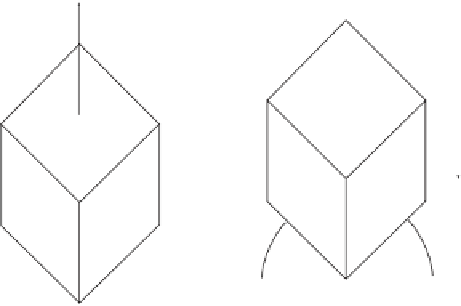Graphics Programs Reference
In-Depth Information
As a result, the 27
◦
standard for axonometric projections (Figure 2.10) makes more
sense. This standard is sometimes also called the 1: 2 isometric projection because it is
based on the ratio
h/w
=1
/
2.
y
w
45
0
h
x
(b)
(a)
30
0
α
27
0
27
0
Figure 2.10: The
27
◦
Isometric Projection.
A similar standard is based on the ratio
h/w
=1,whichleadsto
α
=45
◦
.Thiscase
is also known as the military isometric projection. This projection is suitable for appli-
cations where the horizontal faces of the projected object are important. Figure 2.11
shows that the
xz
plane becomes a regular rhombus in this projection, which makes it
easy to read details and measure distances on this plane.
y
w
45
0
h
x
45
0
α
45
0
45
0
Figure 2.11: The
45
◦
Isometric Projection.
A Dutch standard for dimetric projections is based on the ratio
h/w
=0
.
33. It
is known as the 42
◦
/
7
◦
standard because it results in angles
α
and
β
of these sizes
(Figure 2.12). The
z
axis (the one that's drawn at 42
◦
) is scaled by a factor of 1
/
2.





















Search WWH ::

Custom Search